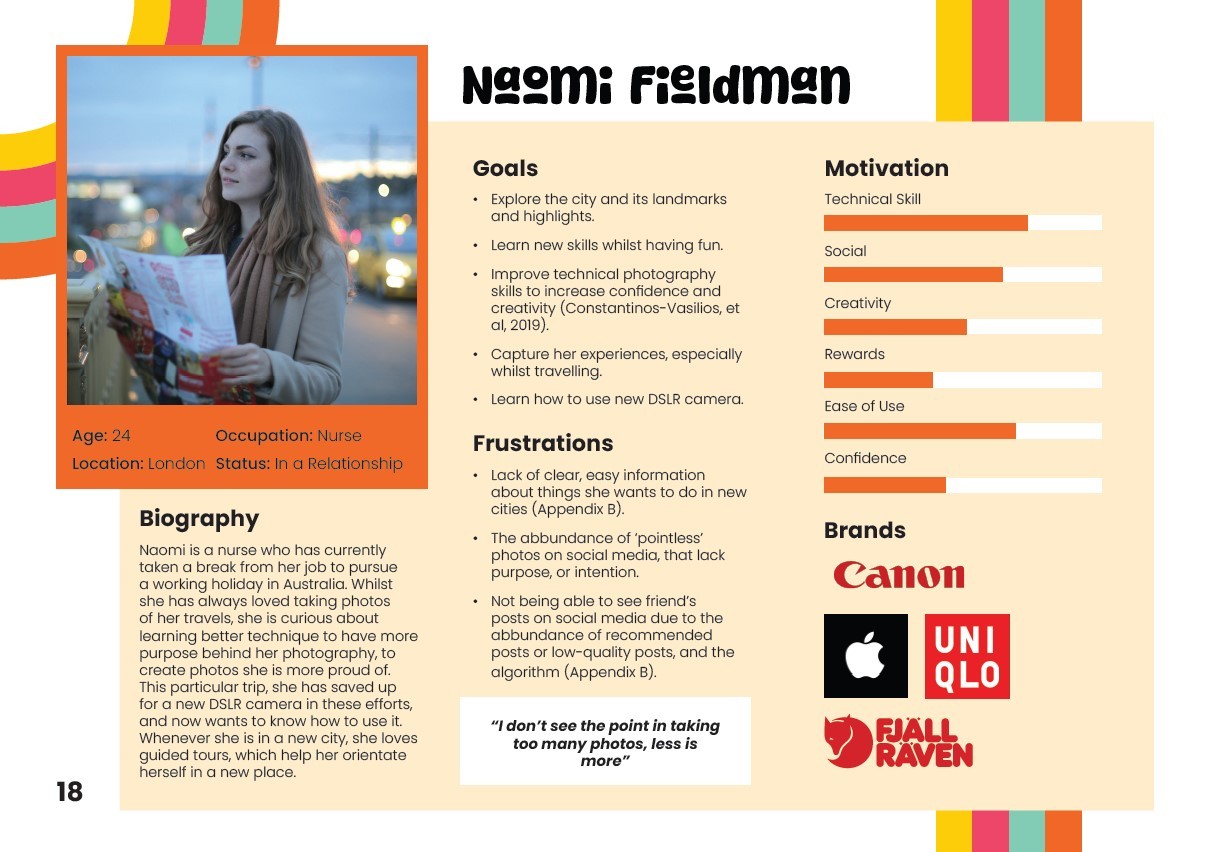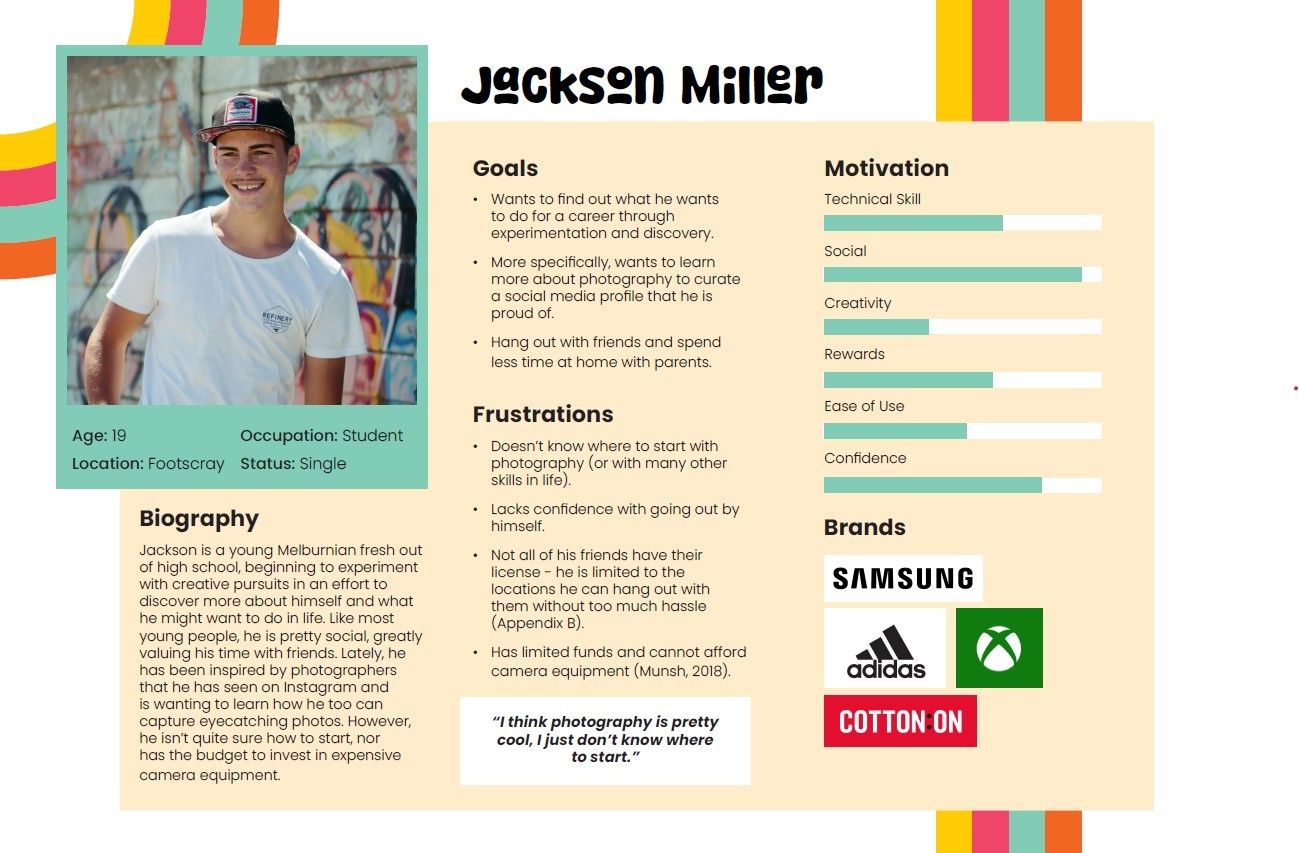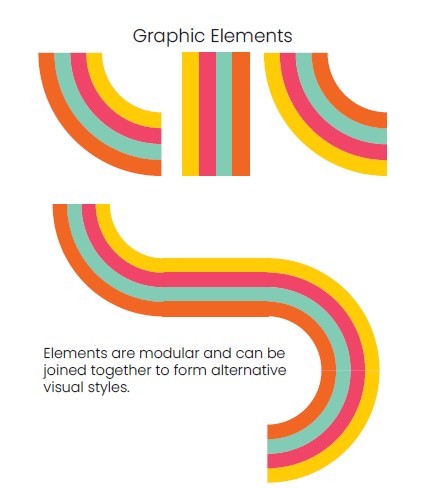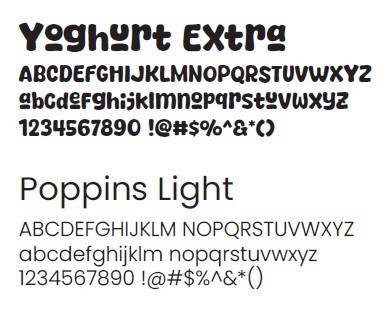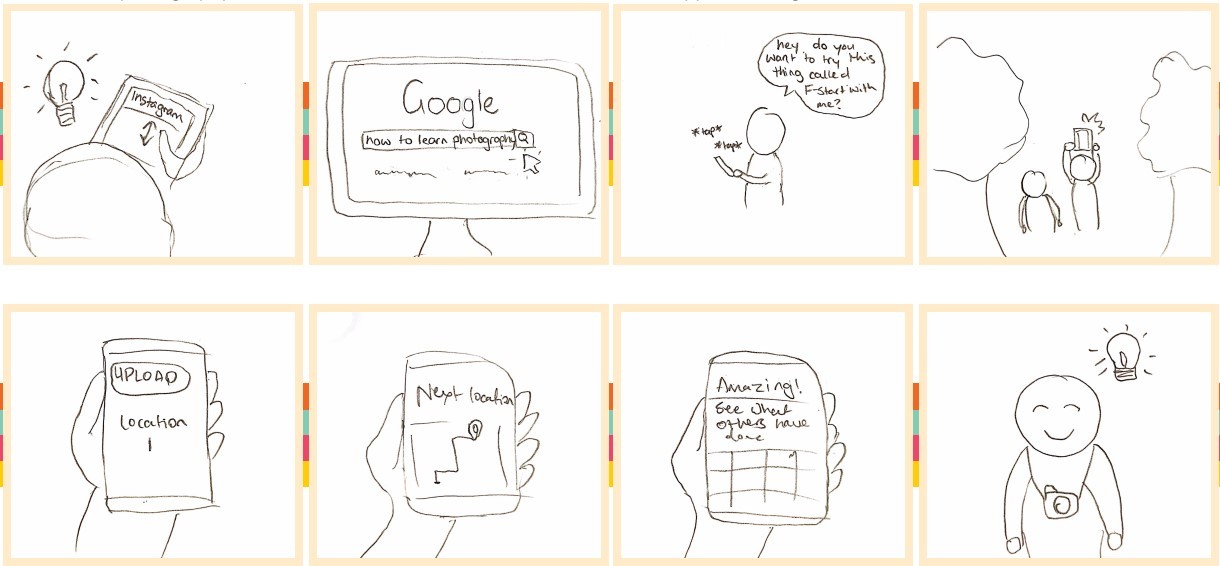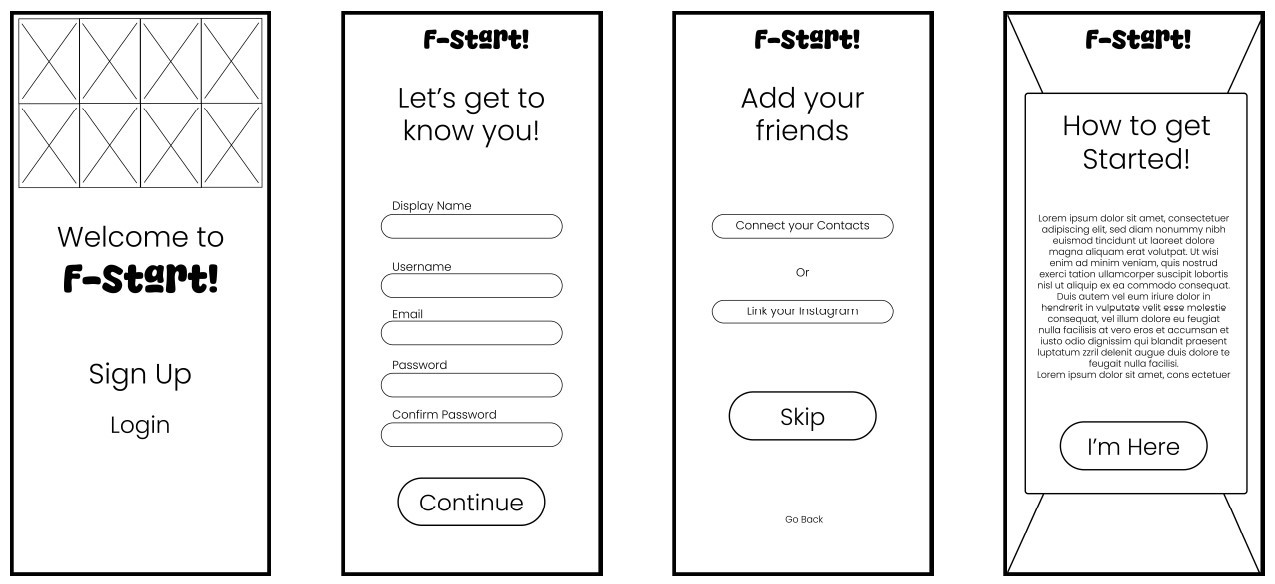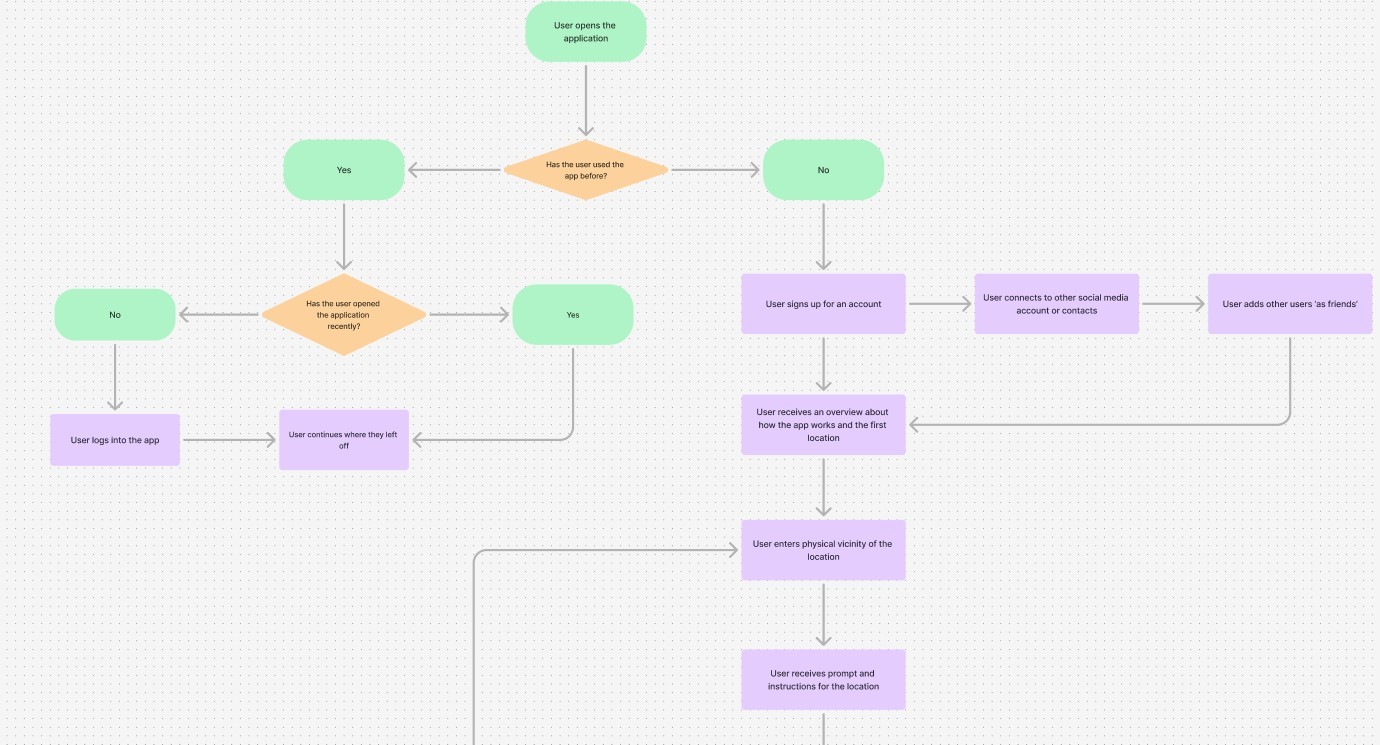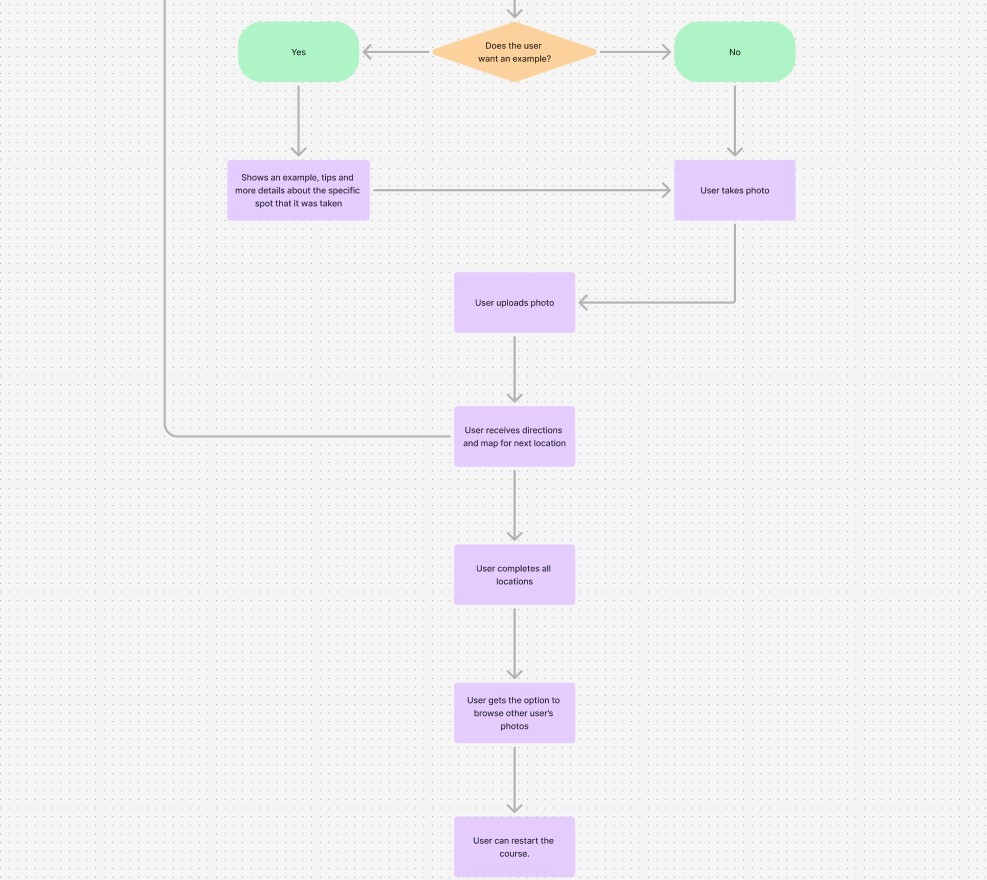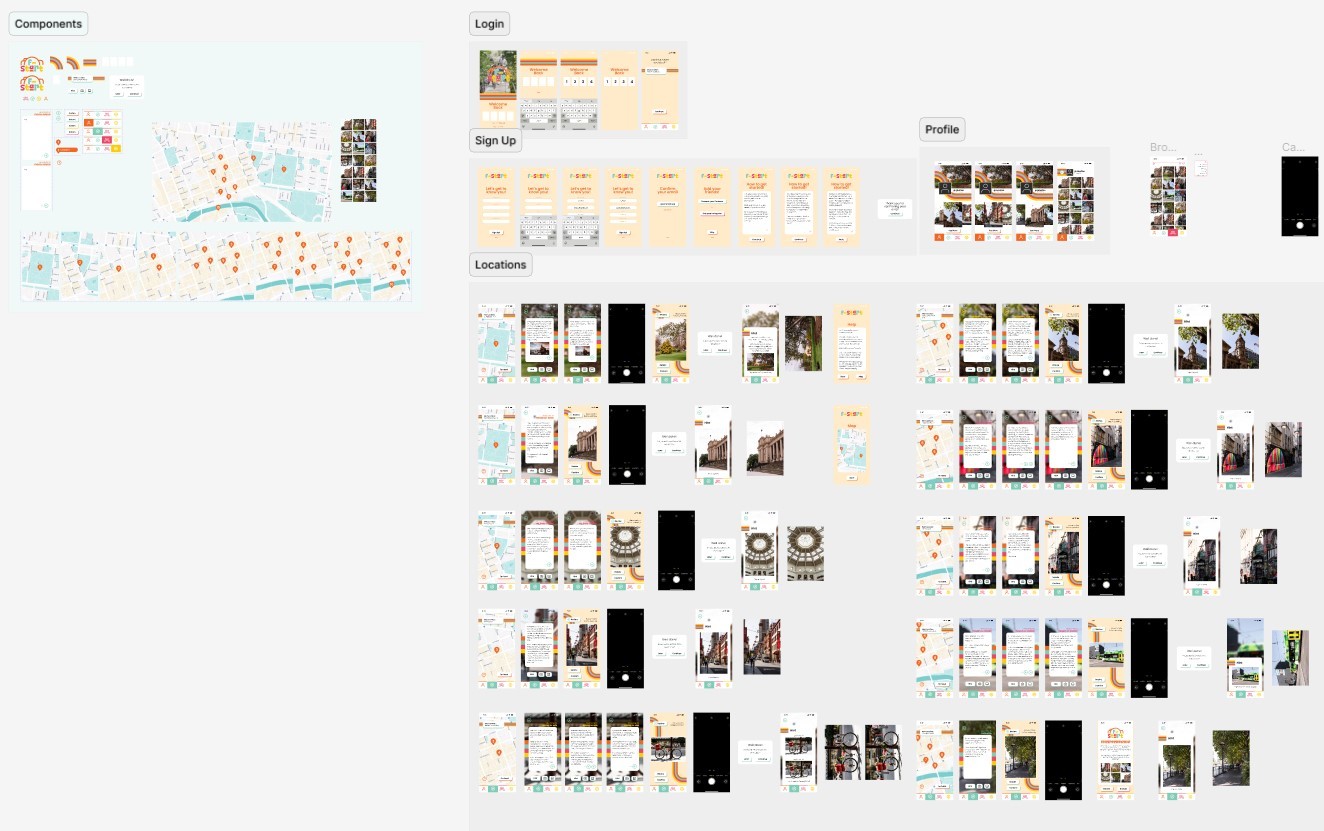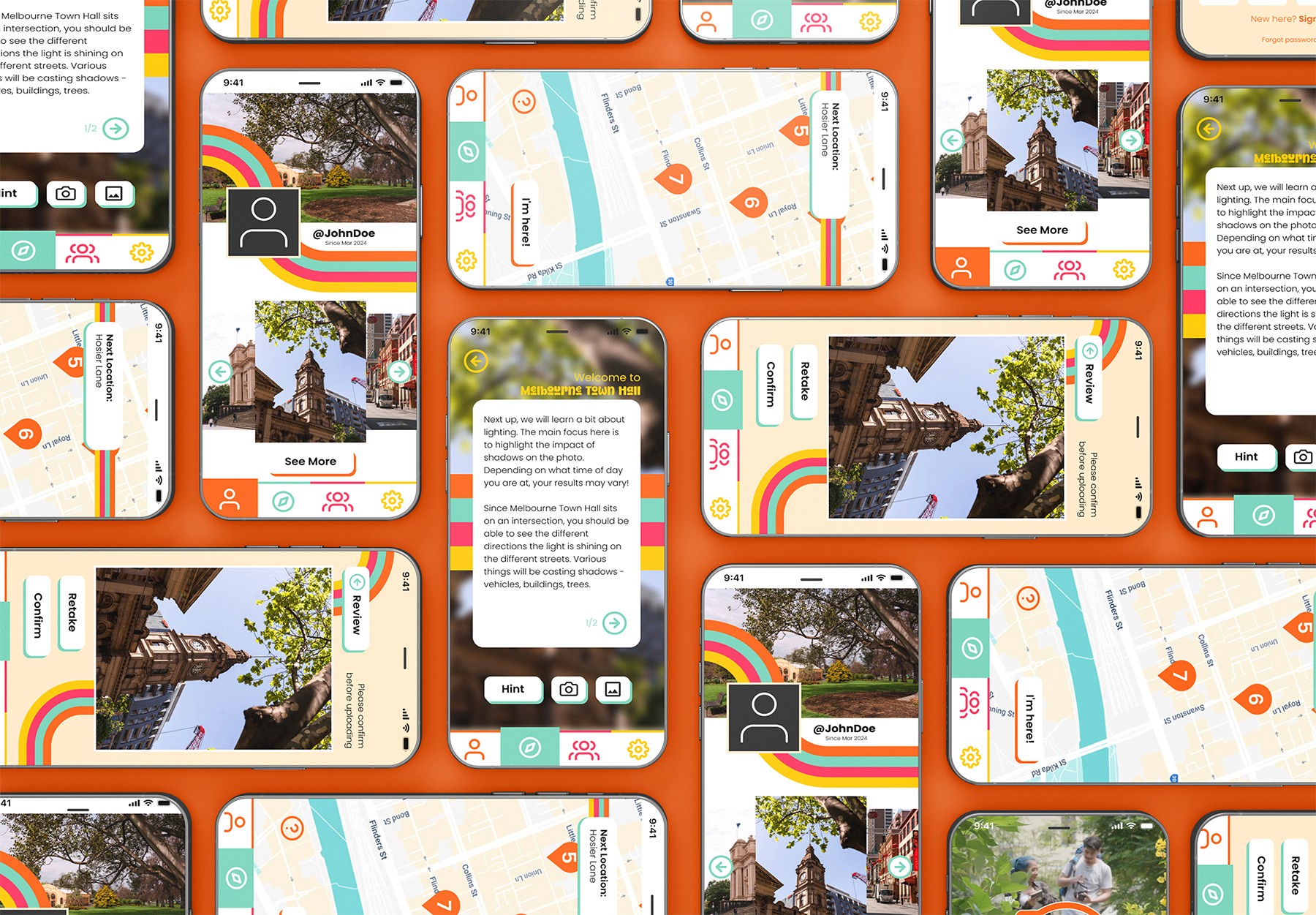Overview
F-Start is an application that is designed to teach users photography, utilising geolocation services, by tying photography tutorials to various locations around Melbourne. By following the narrative and uploading the photos that you take, users can learn and improve on their skills in a space that provides room for collaboration and review.
This project was for academic purposes only. There are also some screens throughout the prototype which are not fully developed, as this was designed to lead the user through a specified journey.
The Brief
Build a geolocated narrative delivered through a mobile phone application.
The narrative needs to take the user around 10 locations within a 25km radius.
The narrative may be fictional, historical, thematic, or based on a topic.
My Roles
User Research
Prototyping
Field Testing
Initial Secondary Research
For proof of concept, and a greater understanding of who I would be designing the application for, I undertook some research to help build the basis of a target audience, and furthermore, a design direction. See references at the end of the page.
Gamification of Photography Learning
Dini & Liu (2017, p. 17) concluded from his study that whilst “humans are naturally interested in playing games” gamification of learning still needs to be applied in a particular way to be fully effective, at least when gamifying photography.
How Instagram has created interest in Photography
In modern society, smartphone usage has “become an ubiquitous part of everyday life.” As a result, the presence of built-in cameras in smartphones have also “led to a sharp rise in taking, viewing, and sharing photos” (Yaya, et al, 2024, pp.429).
Becoming Intentional With Photography
Boichanka suggests that Apple's portrait mode, combined Instagram causing the “automation of the postproduction of photos” has led to a “devaluation of a photo as a cultural object.” It is argued that it is becoming “more challenging to cultivate a photography culture when everyone can make, modify and share photos” (Boichanka, D, 2020, pp. 47).
Focus Groups
In addition to secondary research and analysis, I conducted two focus groups that included members from the target audience to draw some more relevant and personalised data and opinions. These were some of the key insights.
Existing Use of AR & Geolocation Applications
All participants have had prior experience with geolocation applications, predominantly with Google Maps and Pokemon Go.
While many users thought that AR was a cool, interesting concept, there were others who viewed it with a bit more skepticism.
Use of Technology & Social Media
All but one participant (from both focus groups) reported that they used Instagram on a frequent basis. However, activity of the app varied.
All participants used social media primarily for interacting with other people in their life, showing a highly social nature, rather than posting to influence or keep up an image.
Liked & Suggested Features
Having the option to have an example provided for those who want it.
Having the option to use your phone or external camera.
Social interaction with others, especially in the context of learning.
Frustrations (from existing apps)
The current algorithm that focuses on ‘recommended content’ - participants would rather interact with people and things they know and use in the real world.
Lack of attention to use case of a function
User Personas
Research consisted of gathering secondary online research, analysing competitor case studies, conducting interviews and focus groups and performing a thematic analysis to form key insights.
Case studies revealed that the market housed many security solutions, however, they tended to only focus on one key function. Apps such as Milwaukee One Key focused on solely tool inventory, whereas Geotab focused predominantly on vehicle monitoring and tracking, for fleet management purposes. It confirmed Altor's strength in their concept, and encouraged us to explore out-of-scope avenues such as adding a tool inventory functionality - simple to design for, but bringing immense value and solidifying Altor as a holistic security solution.
Focus groups were conducted with those who had already been using Altor's existing rudimentary app whilst interviews were conducted with other tradies from a different disciplines who had not been exposed to Altor's app to gain a broad range of perspectives.
Visual Identity
The colours are meant to emulate fun, young and laid back, whilst also being reminiscent of the retro polaroid aesthetic.
Clean parallel curved lines combined with sharp frames are intended to echo the framing of a photo, whilst maintaining a softer, organic element.
When joined together, the parallel lines also emulate the look of camera lenses.
Development
Equipped with research and insights I set out to developing the backbone of the application. I utilised wireframes, task flows, storyboarding to help flesh out the idea and concept.
The process is designed to be simple and easy, giving the user more capacity to be taking photos, rather than navigating the application. In the event that they do not want to complete all 10 locations in one day, the user can then continue where they have left off.
Users will not be able to browse other user’s photos until they have completed the course, to allow less comparison during their experience of the course.
Field Testing & Recommendations
After initial development, I conducted field-testing and focus groups to further refine the application. Below are some recommendations drawn from the feedback.
Navigation
Being able to jump between locations (after they have been visited) is something that is simple and yet provides a big quality of life improvement.
Instructions
Initial instructions after onboarding need to be more explicit and detailed.
Hints to have more explanation in them.
Usability
There were several usability issues that arose due to components not being properly programmed. These all need to be fixed to ensure a smooth running of the app.
Design
While users were generally impressed with the visual design, perhaps introducing more layout variety would lead to more engagement and positive perceptions of the app
References
Dini, D, & Liu, L, 2017, ‘Intrinsic Motivation Factors in Gamified Photography Learning: Direct and Indirect Effects,’ Journal of Educational Technology Development and Exchange, vol. 10, no. 2, pp.1-24.
Yaya, G. et al, 2024, ‘Are we taking too many pictures? An investigation of the impact of smartphone photography on memory’, Journal of Cognitive Psychology, vol. 36, no. 4, pp. 429–442.
Boichanka, D, 2020, ‘The Algorithmic Production of the Visual:Portrait Mode, Instagram and the Automation of Mobile Photography’, Journal of Creative Industries and Cultural Studies, vol. 5, pp.30-49.

